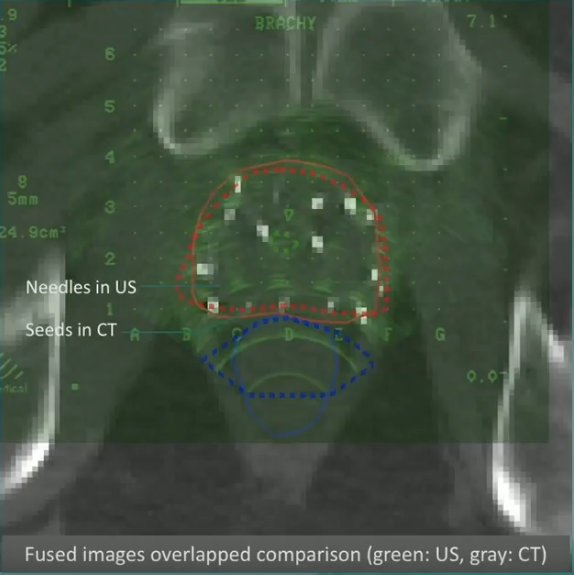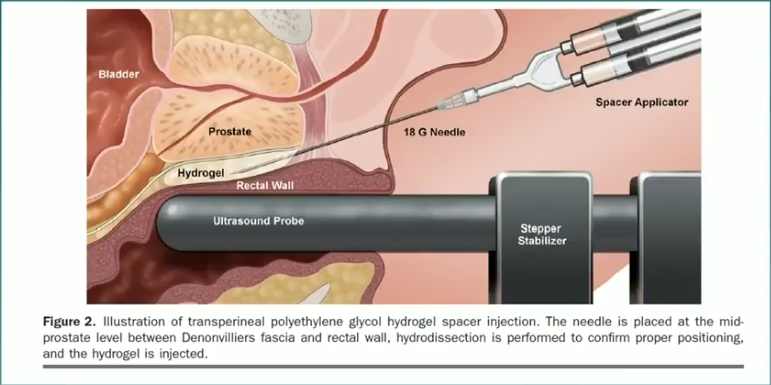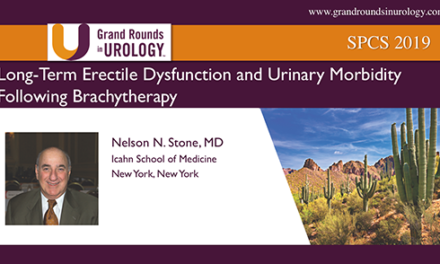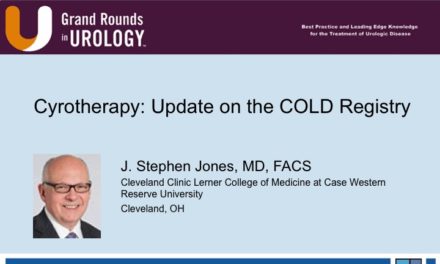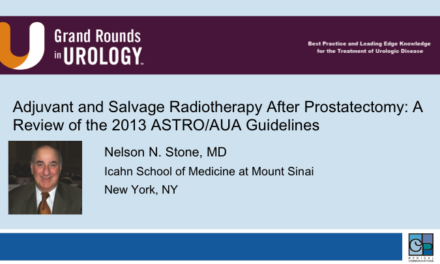Richard G. Stock, MD, presented “Prevention and Management of Rectal Toxicity” during the 23rd Annual Southwest Prostate Cancer Update on April 15, 2018 in Scottsdale, Arizona
How to cite: Stock, Richard G. “Prevention and Management of Rectal Toxicity” April 15, 2018. Accessed [date today]. https://dev.grandroundsinurology.com/prevention-and-management-of-rectal-toxicity/
Prevention and Management of Rectal Toxicity – Summary:
Radiation Dose Volume Effects
Prostate brachytherapy became common in clinical practice from about 1993 to 1998. Over that period of time, the incidence of rectal bleeding following brachytherapy increased. However, there was no centralized guidelines regarding the proper radiation dosage to the rectum.
In response to these conditions, Dr. Stock and a research group published a paper in 2001. They created a dose-response analysis of brachytherapy implants and proctitis, and found a relationship between the volume of rectal wall receiving doses, dosage amount, and the likeliness of developing intermittent, persistent rectal bleeding. Additionally, the study defined various cutpoints of doses and rectal volume that marked increases in rectal bleeding
In this presentation, Dr. Stock reviews ample studies confirming a correlation between dosimetric findings of implants and rectal bleeding.
The Effect of Prostate Swelling on Rectal Dosage
Dr. Juanita Crook published a paper finding that immediately following implantation, the prostate swells significantly near the locations of the needles. This creates edema, therefore separating the prostate from the rectum. While edema is present, the radiation dose to the rectum is is low. However, over time, that edema recedes, and rectal doses become much higher.
Are There Factors We Cannot Control?
Clinicians cannot control some conditions while using brachytherapy, including are the exact seed distribution, genetically based dose volume, individual patients’ location of the prostate compared to the rectal muscles, and shifting of seeds.
The image to the left illustrates a shift of brachytherapy seeds from the insertion location.
Methods for Decreasing Rectal Toxicity
In the management of rectal bleeding, studies comparing brachytherapy alone or brachytherapy with hormone therapy, patients experience less rectal bleeding with ADT treatment. This indicates ADT is protective against rectal bleeding.
Utilizing rectal balloons or hydrogel spacers can also decrease rectal toxicity. These methods move the prostate during implantation in order to spare the rectum from higher doses.
ABOUT THE AUTHOR
Richard G. Stock, MD, is a Professor of Radiation Oncology and Director of Genitourinary Radiation Oncology at the Icahn School of Medicine at Mount Sinai in New York City. He has dedicated his career to delivering the highest quality care to patients using the most advanced technology available, including intensity modulated radiation therapy (IMRT), Novalis Shaped Beam Radiosurgery, real-time ultrasound guided prostate seed implants, and MammoSite, all of which allow him to meticulously target tumors while achieving maximal sparing of normal tissues.
Dr. Stock has served on the board of American College of Radiology Testing and the American Brachytherapy Society, where he is member at large, and as guest editor of a special Brachytherapy issue of Techniques in Urology. He has lectured and presented at dozens of meetings and symposiums across the country and internationally, including in New York, San Francisco, Chicago, Philadelphia, Boston, Spain, Holland, France, and Japan.
Dr. Stock completed his internship at Beth Israel Medical Center and his specialty training at Memorial Sloan-Kettering Cancer Center. He is listed in America's Top Doctors.

